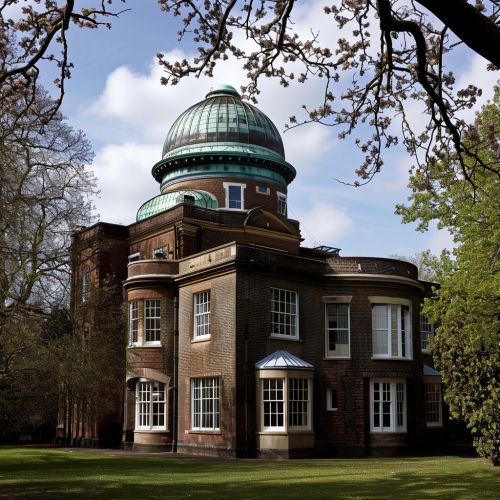Astronomer Royal
History
The title of Astronomer Royal was first established in England by King Charles II in 1675. The initial purpose of the position was to serve the monarch and the state, with the primary duty being to perfect the art of navigation for the benefit of the Royal Navy. The first Astronomer Royal, John Flamsteed, was tasked with "rectifying the tables of the motions of the heavens, and the places of the fixed stars, so as to find out the so much desired longitude of places for the perfecting of the art of navigation." This was a significant task during a time when long-distance sea travel was becoming increasingly important for trade, exploration, and warfare.


Role and Responsibilities
The Astronomer Royal is expected to be a leading figure in the field of astronomy, contributing to its advancement through research and public engagement. The specific duties of the Astronomer Royal have evolved over time, reflecting the changing needs and interests of society and the scientific community. Today, the role is largely honorary, with no formal responsibilities or duties attached to it. However, the Astronomer Royal often takes on a public engagement role, promoting astronomy to the general public and advising the government on astronomical matters when required.
List of Astronomers Royal
There have been 15 Astronomers Royal since the position was established. The following is a list of individuals who have held the title, along with their years of service:
1. John Flamsteed (1675–1719) 2. Edmond Halley (1720–1742) 3. James Bradley (1742–1762) 4. Nathaniel Bliss (1762–1764) 5. Nevil Maskelyne (1765–1811) 6. John Pond (1811–1835) 7. George Biddell Airy (1835–1881) 8. William Henry Mahoney Christie (1881–1910) 9. Frank Watson Dyson (1910–1933) 10. Harold Spencer Jones (1933–1955) 11. Richard van der Riet Woolley (1956–1971) 12. Martin Ryle (1972–1982) 13. Francis Graham-Smith (1982–1990) 14. Arnold Wolfendale (1991–1995) 15. Martin Rees, Baron Rees of Ludlow (1995–present)
Impact and Influence
The Astronomer Royal has traditionally been a figure of significant influence in the field of astronomy. The work of the Astronomers Royal has led to many important discoveries and advancements in the field. For example, Edmond Halley, the second Astronomer Royal, is best known for computing the orbit of the Halley's Comet. James Bradley, the third Astronomer Royal, is credited with the discovery of the aberration of light and the nutation of the Earth's axis.
Current Astronomer Royal
The current Astronomer Royal, as of 2021, is Martin Rees, Baron Rees of Ludlow. He was appointed to the position in 1995. Rees is a highly respected figure in the field of astronomy, with significant contributions to the understanding of black holes and the formation of galaxies. Despite the role being largely honorary, Rees has been active in promoting astronomy and scientific understanding to the public.
